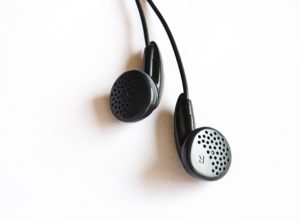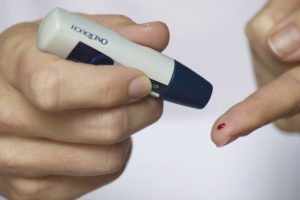2020, in Hindsight
January 6, 2021 • 7 Comments • Posted in blindness, careers/jobs for people who are blind, memoir writing, Mike Knezovich, politics, Seeing Eye dogs, teaching memoir, technology for people who are blindEvery December the publisher of my book Writing Out Loud asks me to write a year-end holiday message to send out to people who subscribe to my newsletter.
But this past holiday, I had writer’s block. Who wanted to think hard about 2020? What would I write about? Conference presentations that got cancelled? Visits to elementary schools that didn’t happen? Friends and family members I haven’t hugged since February? Baseball games we didn’t go to? Life without music concerts? No live theater? No Summer Dance? How I managed to survive all that?
Wait. Surviving it all. Precisely what I’d write about. And now, in hindsight, I could credit blindness for helping me through. Newsletter subscribers were rewarded with the longer version of this story. For you blog readers, the following is an excerpt. Happy New Year!
Let me be clear — the fact that I am blind is not what helped me cope. Being blind is somewhat problematic in a pandemic. Social distancing, for example, can be difficult. Hard to judge what six feet is. Seeing Eye dog Luna and I do our best.
The thing that helped me cope this year is the experience of going blind. Three decades ago, I survived a similarly scary year. 1985 was the year I lost my sight. Like 2020, a year of loss and limitations.
And lessons learned.
Some of those lessons? Slow down. Ask for help. Be brave. Be resourceful. Learn new skills. Help others. Make mistakes, and learn from them. Be grateful. Focus on things you can do rather than fret over those you can’t.
Simply put, allow life-altering events to do just that: alter your life. The skills I learned the year I lost my sight all came in handy when Mike was admitted to the hospital in March this past year with the COVID-19 virus:
- Luna and I were alone, on our own, for ten days. I wouldn’t have made it through without her, and I’m grateful to the Seeing Eye for her training.
- People contacted me to see if I needed help, and I answered honestly. I could use some food! Far-away friends and family charged meals-to-go at local restaurants, and neighbors volunteered to pick up my dinners and deliver them to our condo.
- I got more adept at using VoiceOver (the speech synthesizer that comes with every iPhone) to text and answer the phone when Mike called, or when caring doctors, social workers, friends and family contacted me to see how he was doing.
- My part-time job moderating this blog for Easterseals National Headquarters saved me from feeling lonely. Public policy, special education, health care, funding – all extremely important issues during a pandemic. My work there kept me engaged, and I am grateful my job continued, working from home.
- Before he got sick, Mike had been taking Luna out for her nighttime “empty” of the day. Now, just like when I was losing my sight, I had to be brave. I donned a mask and disposable gloves every night, and assumed bad guys were staying home during the pandemic.
As days went on with Mike still in the hospital, I started ending my email and text responses by asking that, “If you pray, please pray for us. If you think, send good thoughts our way.”
They did. It worked.
After ten days away, Mike came home. And that’s when it dawned on me. I hadn’t been home alone at all: all those people thinking about us helped us through. In its own upside-down way, 2020 has taught me what a gift it is to love – and be loved by – people so much that we ache to be with them in person. I’m hopeful for 2021, a year of good health, happiness…and hugs.

 Trainers at the Seeing Eye school encourage us to talk to our dogs as they guide us. “Remind them you’re there,” they say. “It keeps them focused.” Since the pandemic hit, I’ve been taking one, and sometimes two, hour long walks with Luna every day. What happens when I run out of things to talk to her about? I sing to her instead. This blog idea came up on one of those sing-along walks. I narrowed the titles down to songs I listened to as a child and in my young adulthood, and my focus here is on the title of the song, not the lyrics. Here goes:
Trainers at the Seeing Eye school encourage us to talk to our dogs as they guide us. “Remind them you’re there,” they say. “It keeps them focused.” Since the pandemic hit, I’ve been taking one, and sometimes two, hour long walks with Luna every day. What happens when I run out of things to talk to her about? I sing to her instead. This blog idea came up on one of those sing-along walks. I narrowed the titles down to songs I listened to as a child and in my young adulthood, and my focus here is on the title of the song, not the lyrics. Here goes: Not leave home? Being with my writers is what I love most about teaching memoir. You’re right there, sensing the emotion from writers as they read personal essays out loud. As the class continues, you feel a certain trust develop in a room of people who once were strangers. You witness friendships growing.
Not leave home? Being with my writers is what I love most about teaching memoir. You’re right there, sensing the emotion from writers as they read personal essays out loud. As the class continues, you feel a certain trust develop in a room of people who once were strangers. You witness friendships growing.